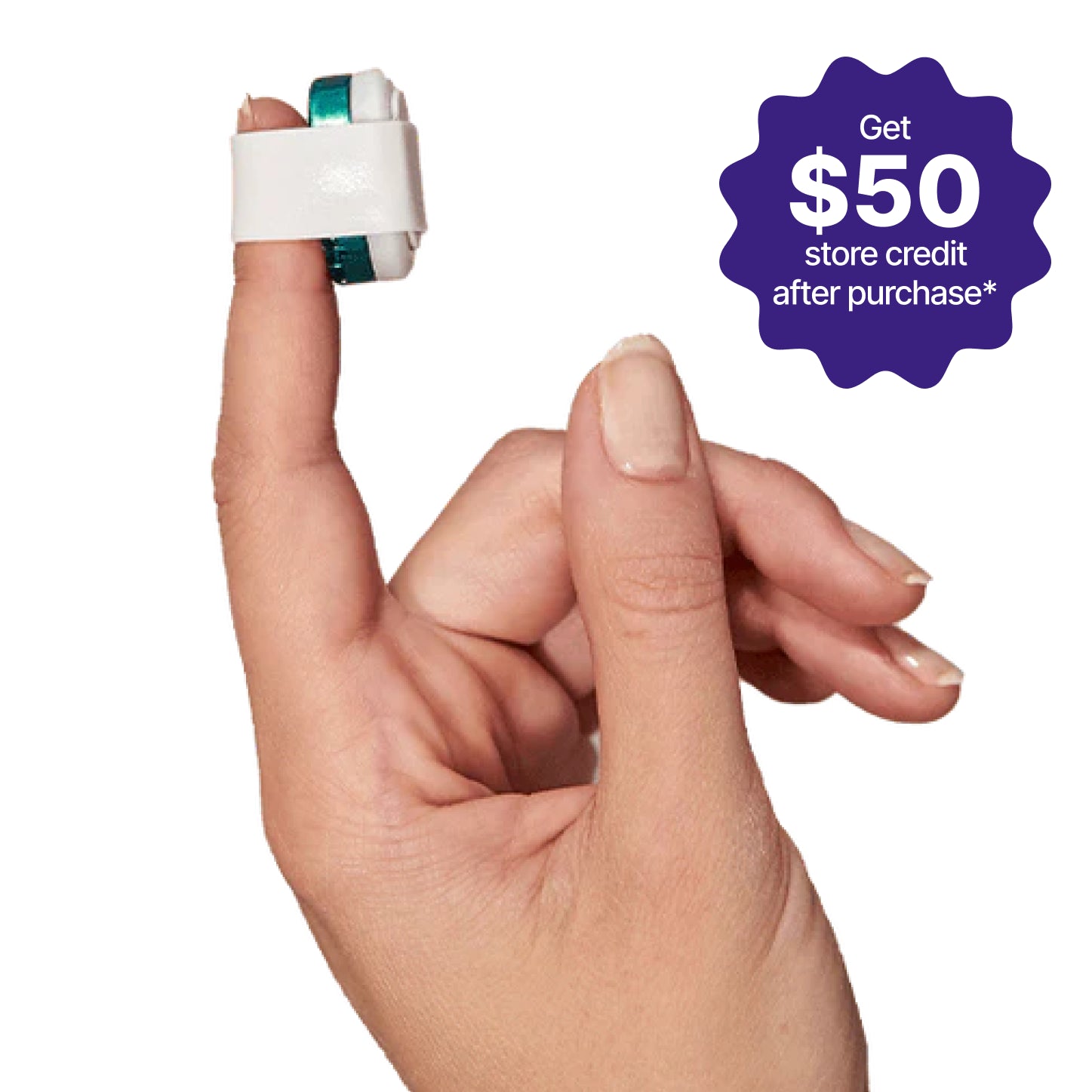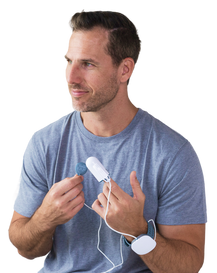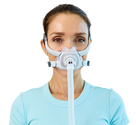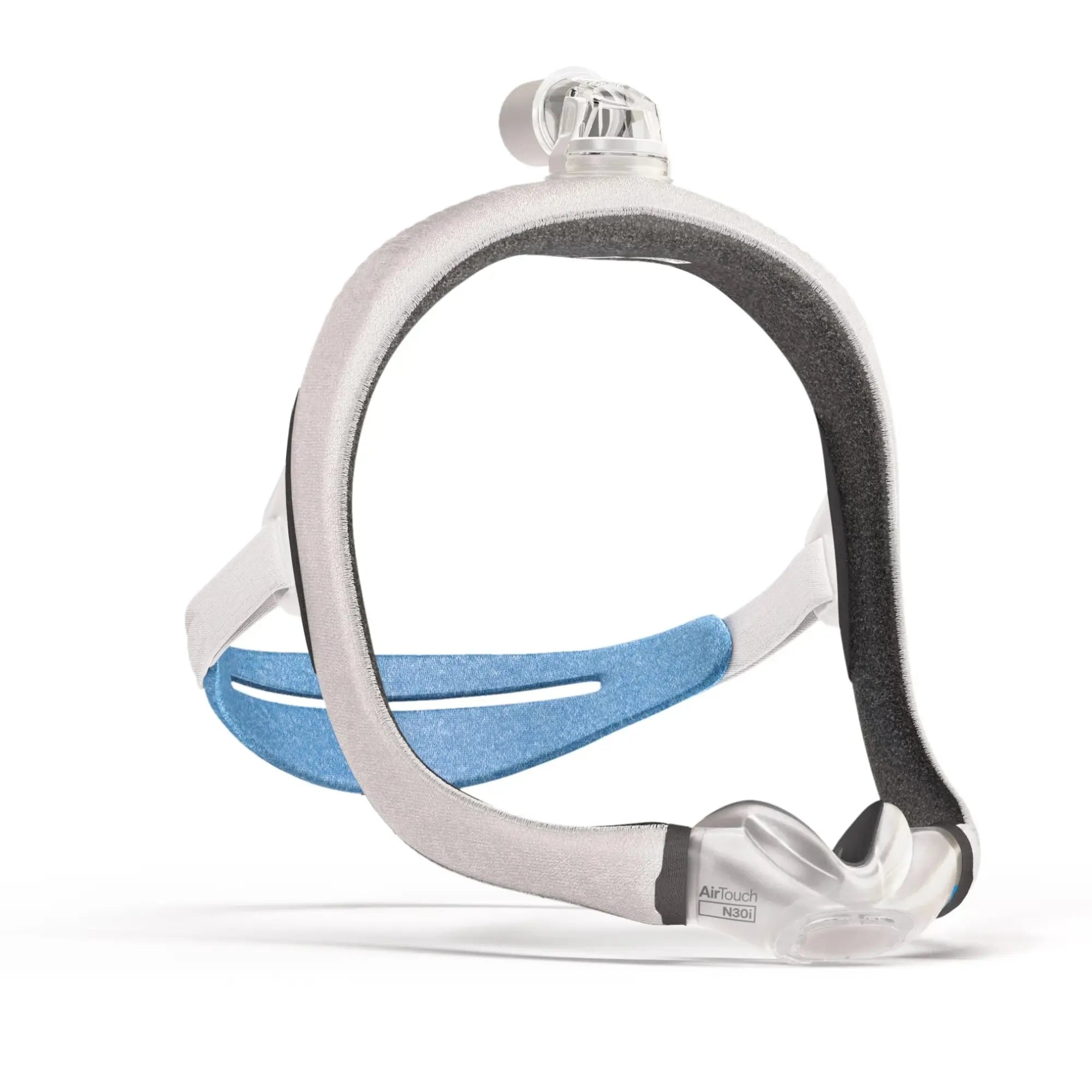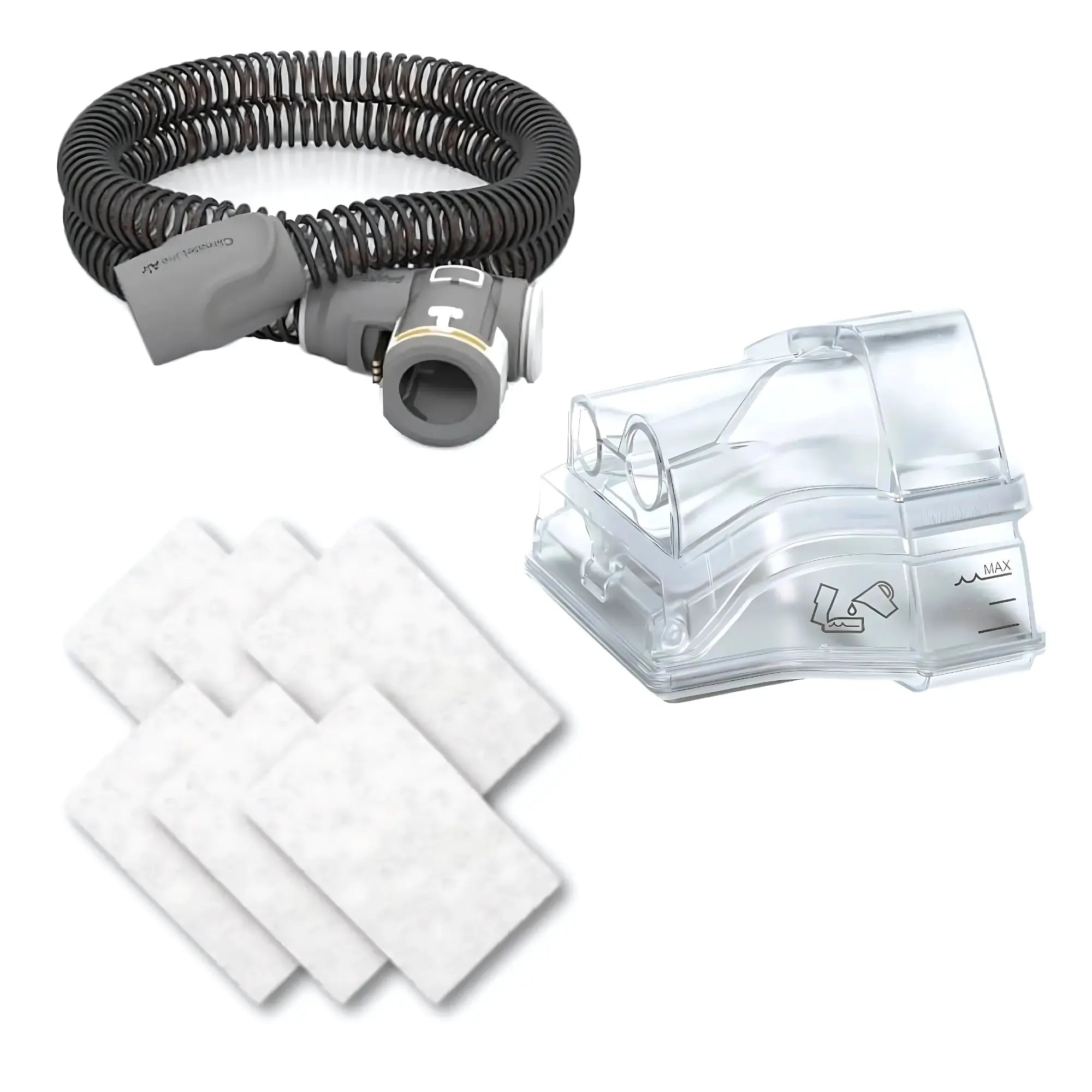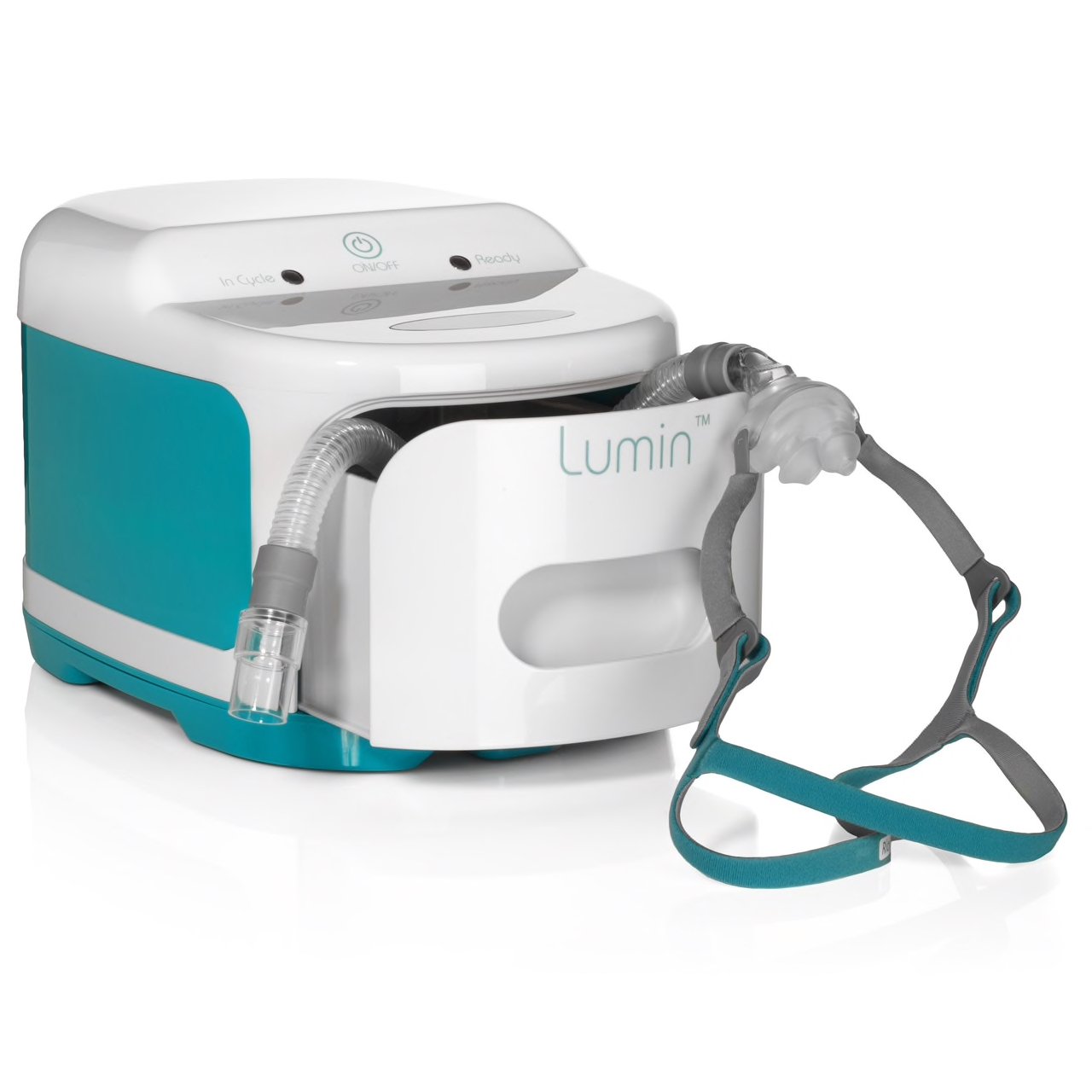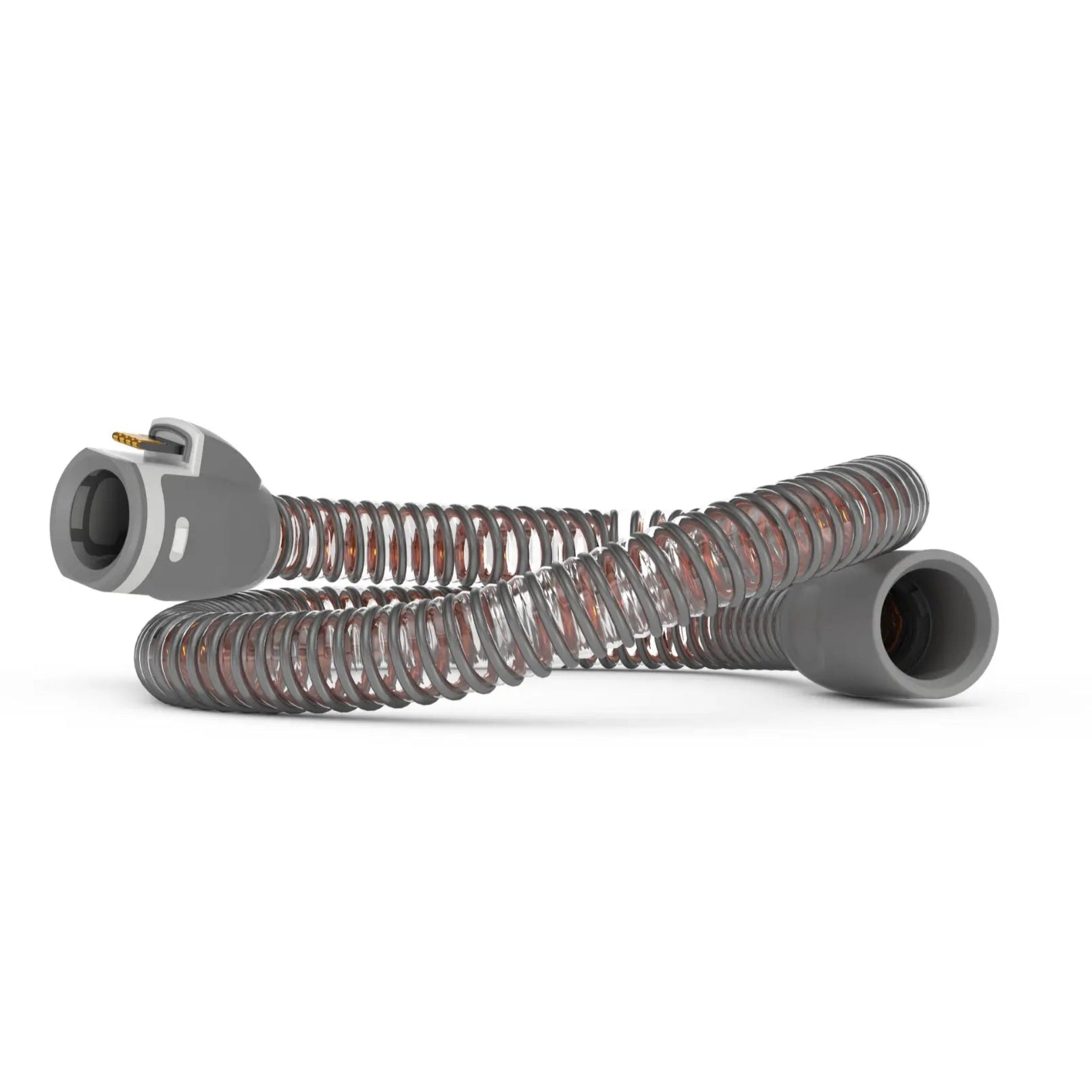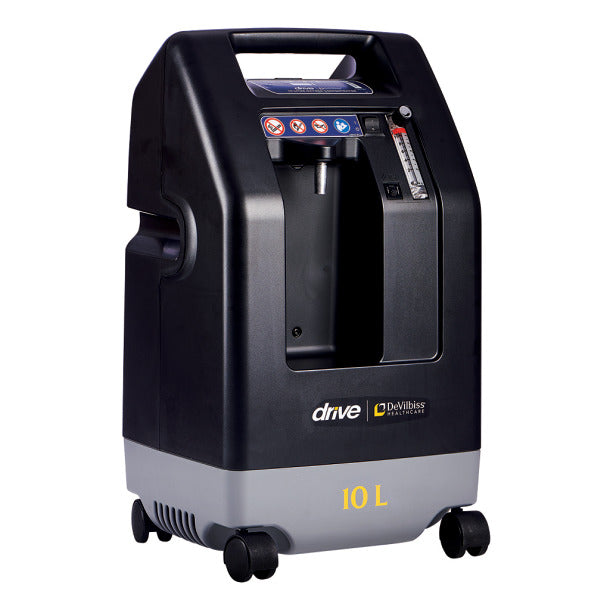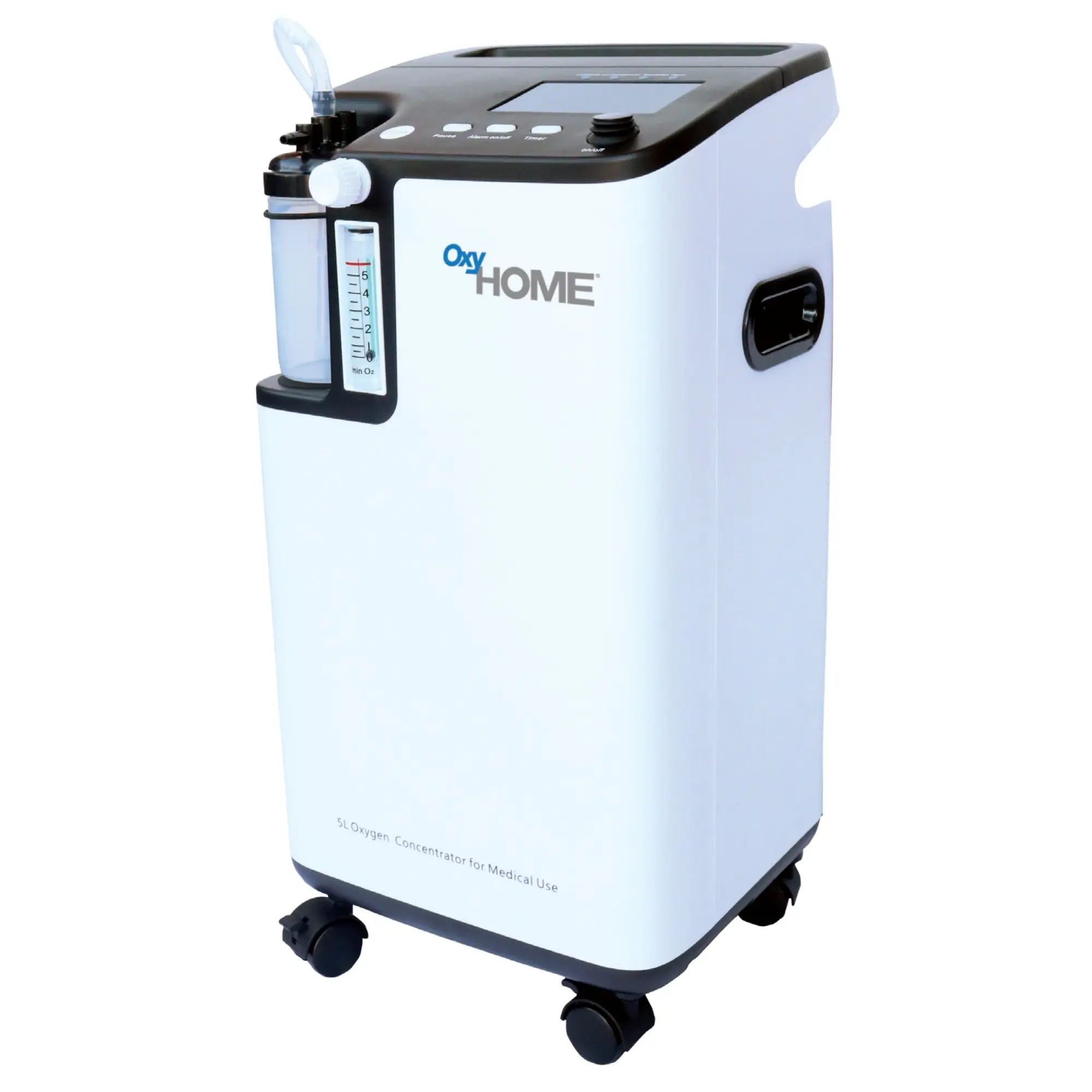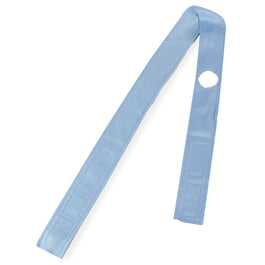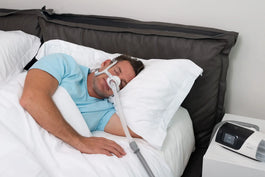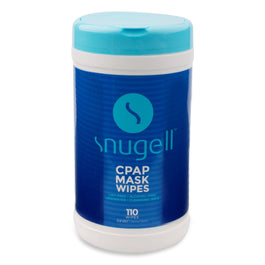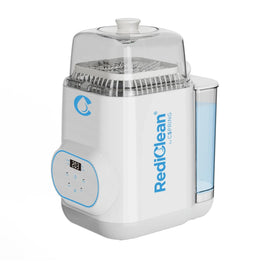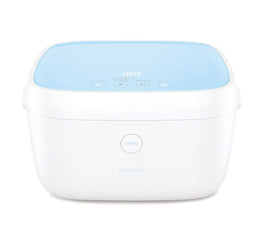If you feel like you're wrestling with your CPAP mask every night, switching to CPAP nasal pillows might be your sleep apnea hero! This type of CPAP mask uses soft, cushioned inserts to deliver pressurized air directly into your nostrils, helping you learn to breathe with a CPAP machine more naturally.
Unlike their bulkier cousins (nasal and full-face masks), nasal pillows are designed for minimal coverage, making them a dream come true for many CPAP users who crave comfort and freedom of movement.
However, CPAP nasal pillows aren't for everyone. They work best for folks who naturally breathe through their nose since mouth breathing with nasal pillows can reduce the effectiveness of the treatment. The key is achieving a secure, leak-free fit that keeps the magic pressurized airflow going all night long.
Ready to master how to breathe with CPAP nasal pillows without struggles? Let’s dive into how to use and get comfortable with CPAP nasal pillows, ensuring effective CPAP therapy.
How to Breathe Correctly Using CPAP Nasal Pillows
To get the most out of your CPAP therapy with nasal pillows, it’s essential to know how to breathe with CPAP nasal mask and learn the techniques that will optimize your experience. Here’s how:
1. Breathe Through Your Nose
Since nasal pillow CPAP masks deliver air directly into your nostrils, it’s vital to keep your mouth closed and focus on how to breathe with nasal CPAP for the best results.
Nasal pillows are designed for nasal breathing, and proper breathing helps prevent air leaks, maximizing the effectiveness of your CPAP therapy.
2. Solutions for Mouth Breathing
Nasal pillow mouth breathing issues can arise if your mouth opens during sleep, so here are some ways to overcome that:
- Keep Your Sinuses Clear: Nasal congestion can tempt you to open your mouth, leading to nasal pillow CPAP mask problems. Using saline sprays, nasal decongestants, or rinses can help keep nasal passages clear.
- Adjust Your Air Pressure or Use a BiPAP Machine: High air pressure can make it tough to exhale, leading to mouth breathing. Learn how to exhale with CPAP more comfortably by using the ramp feature on your CPAP machine to gradually increase pressure. Alternatively, consider a BiPAP machine, which offers different pressure levels for inhalation and exhalation.
- Chin Straps: A chin strap can support your jaw and help you understand how to use nasal pillows CPAP more effectively by keeping your mouth closed.
- Mouth Taping: If chin straps aren't your thing, you can try mouth taping. However, it’s important to consult with your healthcare provider about mouth taping to keep your mouth closed while using the CPAP nasal mask.
-
Using Humidifiers to Prevent Dryness: Dry air can make breathing with CPAP difficult, leading to dryness and even a sore nose from CPAP nasal pillows. Using a humidifier or heated hose with your CPAP machine, such as with the AirSense 11 or AirSense 10, or AirCurve 10, helps keep nasal passages comfortable and reduces irritation.
AirSense 11 & AirCurve 11 ClimateLineAir Heated Tube

AirSense 11 & AirCurve 11 ClimateLineAir Heated Tube
$46.00Compatibility: ResMed AirSense 11 AutoSet CPAP Machine
ResMed AirSense 11 AutoSet CPAP Machine
 ResMed AirCurve 11 VAuto with HumidAir
ResMed ClimateLineAir Heated Tube for Airsense 10 and Aircurve 10 CPAP Machine Best seller
ResMed AirCurve 11 VAuto with HumidAir
ResMed ClimateLineAir Heated Tube for Airsense 10 and Aircurve 10 CPAP Machine Best seller
ResMed ClimateLineAir Heated Tube for Airsense 10 and Aircurve 10 CPAP Machine
$46.00Compatibility: ResMed AirSense 10 AutoSet CPAP Machine with HumidAir Heated Humidifier
ResMed AirSense 10 AutoSet CPAP Machine with HumidAir Heated Humidifier
 ResMed AirCurve™ 10 VAuto BiPAP Machine with HumidAir Heated Humidifier
ResMed AirCurve™ 10 VAuto BiPAP Machine with HumidAir Heated Humidifier
How to Use a Nasal Pillow CPAP Mask Step-by-Step
Understanding how to use a nasal CPAP mask is crucial to your success with CPAP therapy. Getting comfortable with your nasal pillow CPAP mask takes practice, but these steps will help you get started:
1. Preparation
- Wash your face with mild soap and water to remove any oils that might interfere with the mask's seal.
- Dry your face thoroughly and check that your nasal pillow CPAP mask is clean and in good condition.
2. Position the Nasal Pillows
- Gently place the soft plastic nasal pillows under your nostrils, ensuring they sit comfortably and securely. Proper positioning can prevent leaks and teach you how to breathe with a CPAP nasal mask effectively.
3. Put on the Headgear
- Position the CPAP mask strap over your head, adjusting it so the nasal pillows stay securely in place without being too tight.
- Learning how to wear CPAP nasal pillows properly will ensure your mask remains comfortable all night.
4. Adjust the Mask for Comfort
- Tighten or loosen the straps as needed. You want a snug fit that doesn't leave marks on your face or feel uncomfortable. A good test: You should be able to fit a finger under the strap comfortably.
5. Turn on the CPAP Machine
- Once the mask is fitted, turn on your CPAP machine and start breathing with a CPAP machine through your nose to ensure smooth airflow.
6. Check for Leaks
- Feel around your nostrils for air leaks. Adjust the mask or nasal pillows until a secure, leak-free seal is achieved.
- Finding the right fit can make a huge difference, especially if you experience CPAP nasal pillows problems.
Bonus Tips:
- Struggling with leaks? Check out our guide on how to fix them: How Can You Fix CPAP Mask Leaks?
Tips for Adjusting the Mask for Comfort
Getting the right fit for your nasal pillow CPAP mask is essential to maximize comfort and effectiveness. Here are some tips:
- Achieving the Snug Fit: To achieve optimal comfort, balance is key. Adjust the mask so it sits securely without pressing too hard. Learning how nasal pillows should fit is essential for comfortable CPAP therapy.
- Customizing Fit for Different Sleep Positions: For side or active sleepers, try adjusting the mask when lying in your preferred position. Knowing how to wear a CPAP pillow mask for each sleep style will help reduce leaks and improve your sleep quality.
Tips for Getting the Most Out of Your Nasal Pillow Mask
Mastering how to breathe with a CPAP nasal mask can take some time. Here are tips to help you get the most out of your therapy:
- Practice Using Your CPAP Mask Regularly
- Daily Use is Key: Regularly using your mask helps you adjust to the feeling of the nasal pillows and the airflow.
- Patience While Adapting: It takes time to get used to wearing a mask all night. Start by wearing it for short periods while awake as you learn how to breathe with a CPAP machine every night.
- Ensure Proper Fit
-
Choosing the Right Size: Learning how to make CPAP nasal pillows more comfortable starts with finding the right fit. Nasal pillows come in different sizes, and choosing the right one is crucial for both comfort and preventing air leaks.
-
Test Multiple Sizes: Try on a few sizes to see which one creates the best seal without causing irritation or pressure marks.
- Adjusting for Sleep Positions: If you're a side or stomach sleeper, adjusting the mask for these positions can make a big difference. Experiment to find a comfortable fit for all your sleep styles.
- Maintain and Clean Your Mask Regularly
- Use of CPAP Wipes: To avoid CPAP nasal pillow problems, clean your mask with CPAP wipes to remove oils and debris. This helps keep the nasal pillows in good condition and prevents issues like a sore nose from CPAP nasal pillows.
-
CPAP Cleaning Machines: Consider a CPAP cleaning machine like the Liviliti Paptizer, CSpring RediClean a CPAP and BIPAP Accessories Cleaner, or similar. These machines use UV-C light or ozone-free cleaning to eliminate bacteria, viruses, and mold, giving your mask a spa-like clean.
CSpring RediClean BiPAP & CPAP Cleaning Machine
 Free Shipping
Free ShippingCSpring RediClean BiPAP & CPAP Cleaning Machine
$499.99$599.99- 16%Liviliti Paptizer UVC Led Smart Sanitizer Free Shipping
Free ShippingLiviliti Paptizer UVC Led Smart Sanitizer
$279.00
Want to Learn More?
Dive deeper into CPAP cleaning with our blog posts:
The Best CPAP Cleaning MachinesLiviliti Paptizer Review: The Best CPAP Cleaning Machine
Advantages of CPAP Nasal Pillows
If you're looking for a comfortable, effective, and less-obtrusive CPAP mask, nasal pillows might be the perfect choice for you. Here are some of their key benefits:
1. Minimal Face Contact
- Claustrophobia-Friendly: If you feel claustrophobic with traditional CPAP masks, nasal pillows are a great option.
- All-Night Comfort: The minimal design ensures a comfortable fit, making it easier to wear all night long.
2. Open Field of Vision
- Pre-Sleep Entertainment: Enjoy reading or watching TV before bed without feeling restricted.
- Glasses-Friendly: The open design is compatible with glasses, making it convenient for those who need them.
3. Lightweight and Comfortable
- Active Sleepers Rejoice: Ideal for those who toss and turn during the night.
- Gentle on Your Skin: The reduced contact with your face can help minimize skin irritation.
4. Suitable for Higher Pressure Settings
- Effective Therapy: Nasal pillow masks can accommodate higher pressure settings, making them ideal for users needing a stronger airflow. However, some may initially find it hard to exhale with CPAP nasal pillows.
- Reduced Air Leaks: The streamlined design helps to minimize air leaks, ensuring effective treatment.
Nasal Mask vs. Nasal Pillow Mask: What’s Right for You?
Choosing the right CPAP mask is essential for a comfortable and effective therapy experience. Let's break down the pros and cons of nasal and nasal pillow masks to help you make an informed decision.
1. Nasal Masks: What Are They and When Are They Ideal?
What Are Nasal Masks?
Nasal masks cover the nose and create a seal around the bridge and upper lip, delivering airflow evenly into the nasal passages. These masks are suitable for those who breathe through their nose naturally.
When to Choose a Nasal Mask
- Nose breathers: If you naturally breathe through your nose, a nasal mask is a good option.
- Moderate pressure needs: They offer a balanced seal without full-face coverage.
- Mild claustrophobia: Nasal masks provide a comfortable fit without a full enclosure.
When to Avoid Nasal Masks
- Mouth breathers: If you tend to breathe through your mouth, a nasal mask might not be the best choice.
- Nasal congestion: Frequent congestion can make it difficult to maintain a good seal with a nasal mask.
2. Nasal Pillow Masks: Ideal for Minimal Contact and Higher Pressure Needs
What Are Nasal Pillow Masks?
Nasal pillow masks have small cushions that fit directly into the nostrils, delivering air straight to the nasal passages. Their direct airflow may require a little time to learn how to exhale with CPAP nasal pillows, but they offer maximum movement freedom.
When to Choose a Nasal Pillow Mask
- Minimal face contact: If you prefer the least amount of facial contact, nasal pillows are the way to go.
- Higher pressure needs: They can handle higher pressure settings without compromising comfort.
- Active sleepers: Their secure fit and freedom of movement make them ideal for those who toss and turn.
When to Avoid Nasal Pillow Masks
- Mouth breathers: Nasal pillows are not ideal for mouth breathers.
- Sensitive nostrils: Some users with sensitive nostrils may experience discomfort with nasal pillow masks.
3. Key Considerations for Choosing the Right Mask
Choosing the best mask for you depends on your individual needs and preferences. Here are key considerations to look out for:
1. Breathing Style
- Nose breathers: For nose breathers, learning how to use a nasal pillow mask effectively depends on keeping a secure seal. Both nasal and nasal pillow masks will work, but nasal pillows offer a more minimalist design.
- Mouth breathers: A nasal mask with a chin strap or a full-face mask may be more suitable.
2. Comfort and Fit
- Minimal contact: Nasal pillows are lightweight and flexible.
- Comprehensive seal: Nasal masks offer more stability around the nose and are better for those who move during sleep.
3. Pressure Settings
- Higher pressure: Nasal pillows are recommended for stronger airflow needs.
- Lower to moderate pressure: Nasal masks provide a balanced airflow with a larger mask design.
4. Side or Active Sleeper
Understanding how to wear nasal pillow mask devices properly is crucial for side or active sleepers. Nasal pillow masks are ideal for side or active sleepers, allowing movement without disrupting the seal.
5. Claustrophobia Concerns
Nasal pillow masks offer less face coverage for those prone to claustrophobia, while nasal masks provide more structure without being too overwhelming.
6.
Comparison Summary Table
|
Feature |
Nasal Mask |
Nasal Pillow Mask |
|
Face Coverage |
Medium |
Minimal |
|
Comfort |
More stable, larger surface area for support |
Lightweight, less intrusive, minimal contact |
|
Pressure Tolerance |
Moderate pressure settings |
Suitable for high-pressure settings |
|
Best For |
Nose breathers, mild claustrophobia |
Active sleepers, side sleepers, those needing high pressure |
|
Breathing Style |
Best for nose breathers |
Best for nose breathers (requires a chin strap if mouth breathing) |
|
Nasal Congestion |
May cause issues if you have congestion |
Not ideal for those with frequent nasal congestion |
|
Freedom of Movement |
Moderate movement, but could cause leaks |
Excellent for active sleepers, secure fit during movement |
|
Claustrophobia |
Moderate (More contact with the nose and upper lip) |
Minimal (Best for users who dislike face coverage) |
Best Nasal Pillow Masks
Finding the right nasal pillow mask can make a world of difference in your CPAP therapy. From ultra-quiet designs to secure fits for active sleepers, there's a perfect mask for everyone. Here are our top picks:
1. Fisher & Paykel Solo Pillow Mask (NEW MASK)
The Fisher & Paykel Solo Pillows Mask introduces new levels of comfort with its dual-cushion design that sits both in and around each nostril, providing a secure fit for all-night use. Its intuitive AutoFit™ technology ensures a personalized fit.
- AutoFit™ Technology: Automatically adjusts to your unique facial contours for a personalized seal.
- Dual-Cushion Design: Pillow cushions fit both in and around each nostril, offering enhanced comfort and stability.
- One-Touch Adjustment: Quick and easy mask adjustment to maximize comfort and seal.
- F&P myMask™ App Support: Offers video guides on fitting, cleaning, and mask adjustments.
- AutoLock™ Feature: Ensures the mask stays securely in place, preventing leaks throughout the night.
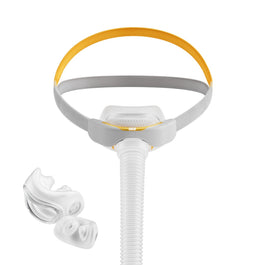
F&P Solo Pillows CPAP Mask AutoFit
2. ResMed AirFit™ P10 Nasal Pillow Mask
The ResMed AirFit™ P10 is an award-winning nasal pillow mask that offers a lightweight and highly comfortable design. It is ideal for users looking for minimal facial contact and ultra-quiet performance, making it a popular choice among CPAP users.
- Lightweight Design: The minimalist frame and slip-on headgear minimize contact with your face for maximum comfort.
- QuietAir™ Vent: Exhale discreetly with the whisper-quiet vent technology, ensuring a peaceful night for both you and your bed partner.
- Dual-Wall Nasal Pillows: Soft, flexible pillows come in three sizes (marked Left and Right) for a customized fit.
- Easy Assembly: Simple, color-coded design with only three parts, making it easy to assemble and clean.
- Compatible with AirMini™ CPAP: Designed for use with both regular CPAPs and travel CPAPs like the AirMini™.
The ResMed AirFit™ P10 boasts minimal facial contact, QuietAir™ vent, lightweight, and flexible customizations. Ideal for learning how to use a nasal pillow CPAP mask.

ResMed AirFit P10 Nasal Pillow CPAP Mask
3. ResMed AirFit™ P30i Nasal Pillow Mask
The ResMed AirFit™ P30i Nasal Pillow Mask features a unique top-of-the-head tube design that keeps the tubing out of your way, allowing for a full range of motion. Its discreet design and open field of vision make it ideal for active sleepers.
- Top-of-Head Tubing: Keeps the tubing out of the way, allowing for freedom of movement in any sleeping position.
- QuietAir™ Vent: Built-in vent disperses exhaled air quietly for a peaceful sleep.
- SpringFit Frame: Self-adjusting frame that contours to the face, ensuring a stable fit.
- Interchangeable Cushions: Easily swap between nasal pillows and cradle cushions for customization.
- Open Line of Sight: Ideal for users who like to read or watch TV before bed.
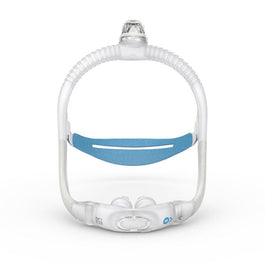
ResMed AirFit P30i Nasal Pillow CPAP Mask Starter Pack
4. Fisher & Paykel Brevida Nasal Pillow Mask
The Fisher & Paykel Brevida Nasal Pillow Mask offers a comfortable and secure seal with its innovative AirPillow™ technology. Designed for confidence and consistency in your CPAP therapy, it provides a perfect fit with minimal contact.
- AirPillow™ Seal Technology: Inflates to create a seal around the nostrils, minimizing leaks and pressure points.
- 360° Swivel Elbow: Allows for free movement during sleep without tangling the tube.
- VisiBlue™ Color Cues: Makes assembling and fitting the mask intuitive with color-coded parts.
- Adjustable Headgear: Split-strap headgear provides stability and comfort with minimal facial marks.
- Two Sizes Included: Comes with two nasal pillow sizes (XS-Small and Medium-Large) for the perfect fit.
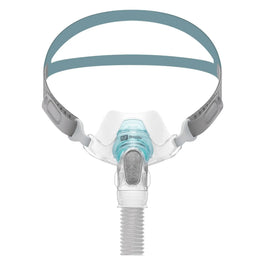
Brevida Nasal Pillow CPAP Mask with Headgear
5. Choosing the Right Nasal Pillow Mask
Consider your needs and preferences when making your decision. This table provides a quick comparison:
|
Mask |
Key Features |
Best For |
Price |
|
ResMed AirFit™ P10 |
QuietAir™ vent, lightweight, dual-wall pillows |
Users seeking minimal contact and quiet performance |
$105 |
|
F&P Solo Pillows Mask |
AutoFit™ tech, dual-cushion flexibility, AutoLock™ technology |
Active sleepers needing a secure fit and customization |
$119 |
|
ResMed AirFit™ P30i |
Top-of-head tubing, SpringFit frame, interchangeable cushions |
Side sleepers, users needing tubing flexibility |
$115 |
|
F&P Brevida Nasal Pillow Mask |
AirPillow™ seal, 360° swivel elbow, VisiBlue™ color cues |
Users seeking a secure fit with minimal pressure points |
$89 |
Need help finding the perfect CPAP mask?
Our comprehensive CPAP Mask Buying Guide is here to help! This handy guide provides valuable insights into the world of CPAP masks, empowering you to make informed decisions.
What's in the Guide?
- Mask Selection Tips: Discover how to choose a mask that delivers optimal comfort and therapy outcomes.
- Understanding Different Mask Types: Learn the ins and outs of nasal, nasal pillow, and full-face masks and how they cater to different sleep and breathing needs.
- CPAP Cleaning and Maintenance Tips: Get expert advice on keeping your mask in top condition for long-lasting performance.
Ready to Dive In?
Download the CPAP Mask Buying Guide
By downloading our guide, you'll be well-equipped to make an informed decision and enhance your CPAP therapy experience.
FAQs
What are CPAP nasal pillows?
CPAP nasal pillows are a type of CPAP mask that delivers pressurized air directly into your nostrils through small, soft cushions.
How do CPAP nasal pillows work?
CPAP nasal pillows work by creating a seal around your nostrils, delivering a continuous flow of pressurized air to keep your airway open during sleep.
Are CPAP nasal pillows comfortable?
Yes, CPAP nasal pillows are generally considered comfortable. They are designed to be lightweight and minimally invasive, reducing facial pressure and irritation.
How do I know if I need a CPAP nasal pillow?
If you have sleep apnea and prefer a less intrusive mask option, a CPAP nasal pillow might be a good choice for you. Consult with your doctor or sleep specialist to determine the best mask type for your specific needs.
What are the different types of CPAP nasal pillows?
There are various types of CPAP nasal pillows, each with unique features and designs. Some popular types include dual-wall pillows, single-wall pillows, and gel pillows.
How do I breathe with CPAP nasal pillows?
To breathe with CPAP nasal pillows, simply inhale and exhale through your nose. The pressurized air will flow through the pillows and into your airways.
How do I adjust my CPAP nasal pillow?
You can adjust your CPAP nasal pillow by tightening or loosening the headgear straps. Ensure a snug fit without excessive pressure.
How do I clean my CPAP nasal pillow?
Clean your CPAP nasal pillow regularly according to the manufacturer's instructions. Typically, this involves washing the parts with warm, soapy water and air-drying them.
How often should I replace my CPAP nasal pillow?
It is recommended to replace your CPAP nasal pillow every 3-6 months or more frequently if you notice signs of wear and tear.
Can I use a chin strap with CPAP nasal pillows?
Yes, you can use a chin strap with CPAP nasal pillows to help keep your mouth closed during sleep, which can improve therapy effectiveness.
What are the benefits of using CPAP nasal pillows?
CPAP nasal pillows offer minimal facial contact, are lightweight and comfortable, provide an open field of vision, and are suitable for higher-pressure settings.
What are the disadvantages of using CPAP nasal pillows?
CPAP nasal pillows may not be suitable for everyone. They can be less stable for active sleepers and may not be ideal for those with frequent nasal congestion or mouth breathing.
Which is the best CPAP nasal pillow for me?
The best CPAP nasal pillow for you depends on your individual needs and preferences. Consider factors such as your sleep position, breathing style, and comfort level.
What is the best CPAP nasal pillow for side sleepers?
A nasal pillow mask with a stable headgear and a secure seal is ideal for side sleepers. Look for masks that offer a wide range of motion and minimal facial contact.
What is the best CPAP nasal pillow for beginners?
For beginners, a simple and easy-to-use nasal pillow mask is recommended. Look for masks with clear instructions and minimal assembly.
What is the most comfortable CPAP nasal pillow?
Comfort is subjective and varies from person to person. However, many users find nasal pillow masks to be comfortable due to their minimal design and lightweight nature.
What is the cheapest CPAP nasal pillow?
The cost of CPAP nasal pillows can vary depending on the brand, model, and retailer. To find the most affordable option, compare prices and look for deals.
Where can I buy CPAP nasal pillows?
You can purchase CPAP nasal pillows from various sources, including online retailers, medical supply stores, and your CPAP provider.



